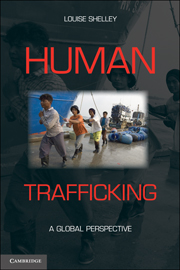Conclusion
Published online by Cambridge University Press: 05 June 2012
Summary
Slavery has unfortunately existed throughout history. The most recent precedent to contemporary trafficking is the white slavery that existed among Western Europe, the United States, and South America, particularly Argentina and Brazil, between the 1880s and 1930s. Most that has been written on this period addresses the role of Jewish organized crime and the bravery of one of its victims in bringing this trade to an end. But the historical records of the U.S. immigration service at the beginning of the twentieth century reveal that there were many more victims of this trade than the Jewish women brought from Eastern Europe.
The white slavery of the early 20th century is analogous to the current slavery and not that of forced labor camps under Stalin or Hitler, which was state controlled. The white slave trade was conducted by nonstate actors, as is 80 percent of today’s human trafficking according to previously cited ILO data. Like today, white slavery involved the movement of victims long distances across continents and oceans. These victims had often been deceived about their future in their destination countries. Many had hoped that their lives in the United States or the then affluent Argentina would be better than the life they left behind. But once they had been trafficked, they could not escape because the traffickers colluded with corrupt law enforcement officials to keep the women enslaved. Even though the women had been coerced into prostitution, they were stigmatized for engaging in such work. Therefore, even if the women could leave the life to which they had been trafficked, there was no possibility of reintegration into the Jewish community to which they naturally belonged. The older women who survived created a life and society for themselves in which they provided for each other’s mutual assistance, a situation that does not exist in much of the world today because of the pervasiveness of AIDS and the early mortality of many women who have been trafficked.
- Type
- Chapter
- Information
- Human TraffickingA Global Perspective, pp. 295 - 324Publisher: Cambridge University PressPrint publication year: 2010



